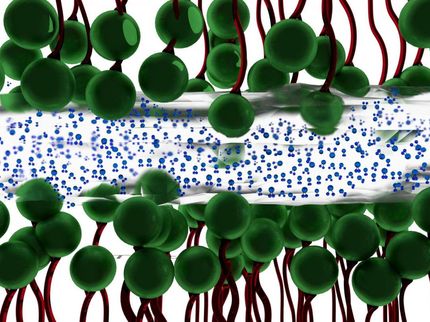New process is promising for hydrogen fuel cell cars
Advertisement
A new process for storing and generating hydrogen to run fuel cells in cars has been invented by chemical engineers at Purdue University. The process, given the name hydrothermolysis, uses a powdered chemical called ammonia borane, which has one of the highest hydrogen contents of all solid materials, said Arvind Varma, R. Games Slayter Distinguished Professor of chemical engineering and head of the School of Chemical Engineering.
"This is the first process to provide exceptionally high hydrogen yield values at near the fuel-cell operating temperatures without using a catalyst, making it promising for hydrogen-powered vehicles," he said. "We have a proof of concept."
The new process combines hydrolysis and thermolysis, two hydrogen-generating processes that are not practical by themselves for vehicle applications. Research findings were presented during the International Symposium on Chemical Reaction Engineering in Philadelphia. The research also is detailed in a paper appearing in the AIChE Journal.
Ammonia borane contains 19.6 percent hydrogen, a high weight percentage that means a relatively small quantity and volume of the material are needed to store large amounts of hydrogen, Varma said.
"The key is how to efficiently release the hydrogen from this compound, and that is what we have discovered," he said.
The paper was written by former Purdue doctoral student Moiz Diwan, now a senior research engineer at Abbott Laboratories in Chicago; Purdue postdoctoral researcher Hyun Tae Hwang; doctoral student Ahmad Al-Kukhun; and Varma. Purdue has filed a patent application on the technology.
In hydrolysis, water is combined with ammonia borane and the process requires a catalyst to generate hydrogen, while in thermolysis the material must be heated to more than 170 degrees Celsius, or more than 330 degrees Fahrenheit, to release sufficient quantities of hydrogen.
However, fuel cells that will be used in cars operate at about 85 degrees Celsius (185 degrees Fahrenheit). Hydrogen fuel cells generate electricity to run an electric motor. The new process also promises to harness waste heat from fuel cells to operate the hydrogen generation reactor, Varma said.
The researchers conducted experiments using a reactor vessel operating at the same temperature as fuel cells. The process requires maintaining the reactor at a pressure of less than 200 pounds per square inch, far lower than the 5,000 psi required for current hydrogen-powered test vehicles that use compressed hydrogen gas stored in tanks.
In some experiments, the researchers used water containing a form of hydrogen called deuterium. Using water containing deuterium instead of hydrogen enabled the researchers to trace how much hydrogen is generated from the hydrolysis reaction and how much from the thermolysis reaction, details critical to understanding the process.
At the optimum conditions, hydrogen from the hydrothermolysis approach amounted to about 14 percent of the total weight of the ammonia borane and water used in the process. This is significantly higher than the hydrogen yields from other experimental systems reported in the scientific literature, Varma said.
"This is important because the U.S. Department of Energy has set a 2015 target of 5.5 weight percent hydrogen for hydrogen storage systems, meaning available hydrogen should be at least 5.5 percent of a system's total weight," he said. "If you're only yielding, say, 7 percent hydrogen from the material, you're not going to make this 5.5 percent requirement once you consider the combined weight of the entire system, which includes the reactor, tubing, the ammonia borane, water, valves and other required equipment."
The researchers determined that a concentration of 77 percent ammonia borane is ideal for maximum hydrogen yield using the new process.

































































